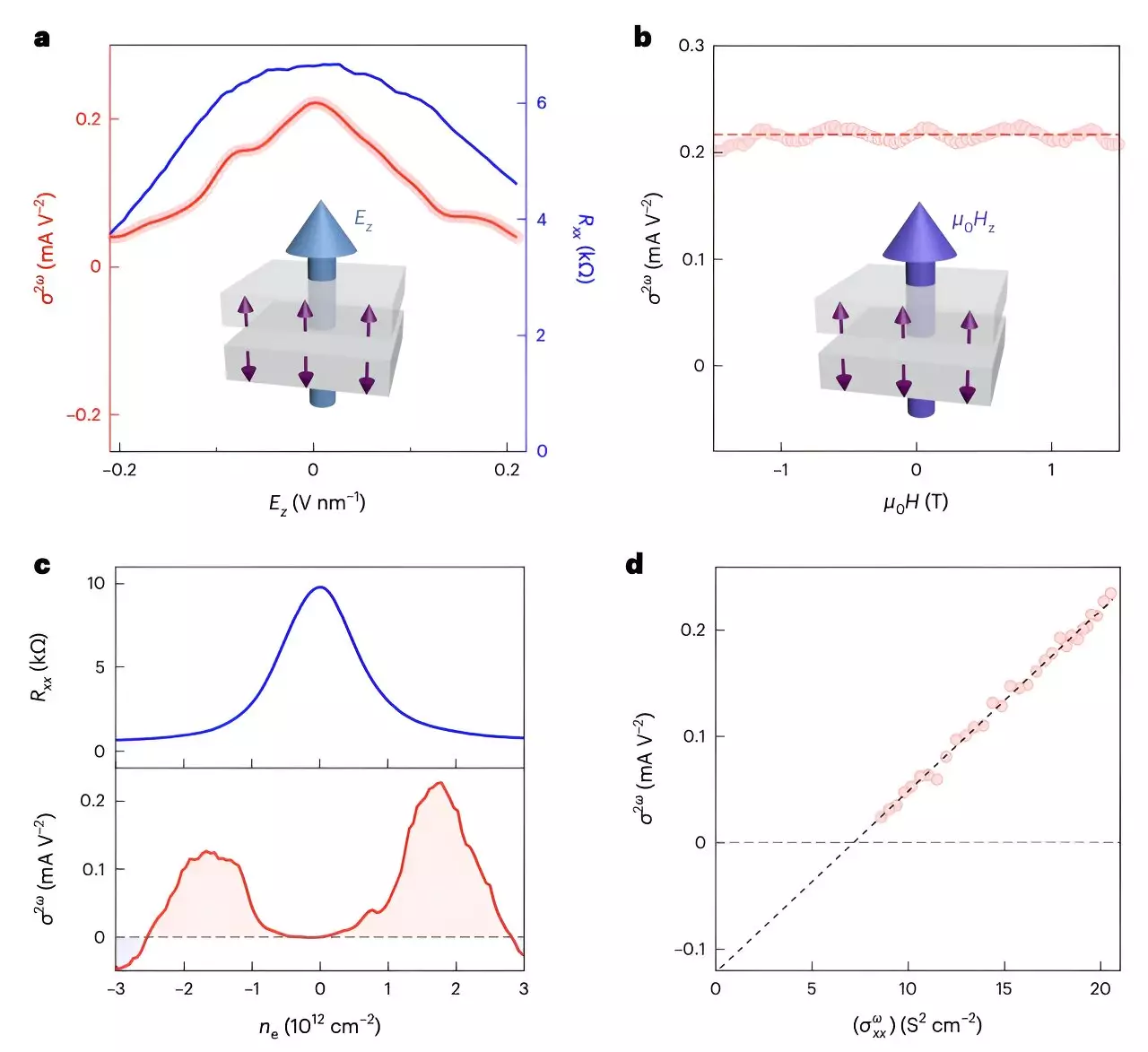Antiferromagnets represent a unique class of materials that exhibit magnetic interactions where adjacent atomic magnetic moments align oppositely, leading to a zero net magnetization at the macroscopic level. This intriguing property makes them candidates of immense interest within the fields of material science and condensed matter physics. Researchers are increasingly focusing on harnessing the underlying properties of antiferromagnets for advanced technological applications, particularly in spintronics and electronics.
Recently, an exciting breakthrough emerged from a team of researchers at Harvard University, who observed a remarkable phenomenon known as the antiferromagnetic diode effect in a centrosymmetric material, MnBi2Te4. Unlike traditional diodes, which must possess asymmetrical structures to direct electrical current, this antiferromagnetic diode operates within a material that defies standard expectations regarding directional charge separation. This unexpected behavior opens new pathways for innovative applications.
An antiferromagnetic diode effect could serve as a foundational technology for future applications, such as in-plane field-effect transistors and efficient energy harvesting from microwave radiation. The paper detailing this research was published in *Nature Electronics*, underscoring its significance within the scientific community. The potential applications of this discovery could be transformative within the realm of electronic devices.
The diode effect, historically observed in various materials, is characterized by the efficient flow of electric current in a singular direction when a voltage is applied. This characteristic is central to the functionality of numerous electronic devices, including radio transmitters, digital signal processors, temperature sensors, and microwave circuits. The Harvard researchers applied their insights from recent studies on superconducting systems, particularly focusing on non-centrosymmetric polar conductors to establish a foundation for their investigation into MnBi2Te4.
In a surprising twist, the research team was able to create devices with this antiferromagnetic diode effect despite the material’s centrosymmetric crystal structure. The significance lies in the potential to develop nonlinear applications, presenting a fresh avenue for technological innovation, especially in the field of electronics where conventional limits are being tested.
The research team meticulously designed experiments utilizing various electrode configurations. They explored devices featuring both Hall bar electrodes—common in measuring the Hall effect—and radially distributed electrodes, thereby diversifying their investigative approach. Successful detection of the antiferromagnetic diode effect was confirmed through a series of nonlinear transport measurements that validated the researchers’ initial hypothesis.
To study the properties of even-layered MnBi2Te4 and explore the diode effect, the team incorporated advanced methodologies in their research. A spatially resolved optical method, along with electrical sum frequency generation (SFG) measurements, proved instrumental in affirming their findings. The substantial second-harmonic transport observed pointed to the unique capabilities offered by this antiferromagnetic state, suggesting substantial implications for nonlinear electronic devices.
The implications of the antiferromagnetic diode effect extend well beyond theoretical implications; the authors highlighted its potential for practical applications in the development of antiferromagnetic logic circuits, high-performance microwave energy harvesters, and robust spintronic devices. Their findings stimulate an emerging interest in quantum materials and their roles in redefining the landscape of modern electronics.
As research efforts continue to unravel the complexities associated with antiferromagnetic systems, further exploration is warranted. Investigations into how these properties can be engineered or enhanced for specific applications remain ripe areas of inquiry. The promise of antiferromagnetic diode effects could act as a springboard for future discoveries, inspiring researchers to unveil new paradigms in electronic device fabrication.
The pioneering efforts of the Harvard research team not only illuminate the extraordinary potential of antiferromagnetic materials but also serve as a clarion call for a deeper understanding of their physics. With continued dedication and exploration, the barriers to utilizing these remarkable materials in practical applications may soon be effectively challenged, marking the dawn of a new era in electronics.


Leave a Reply
You must be logged in to post a comment.